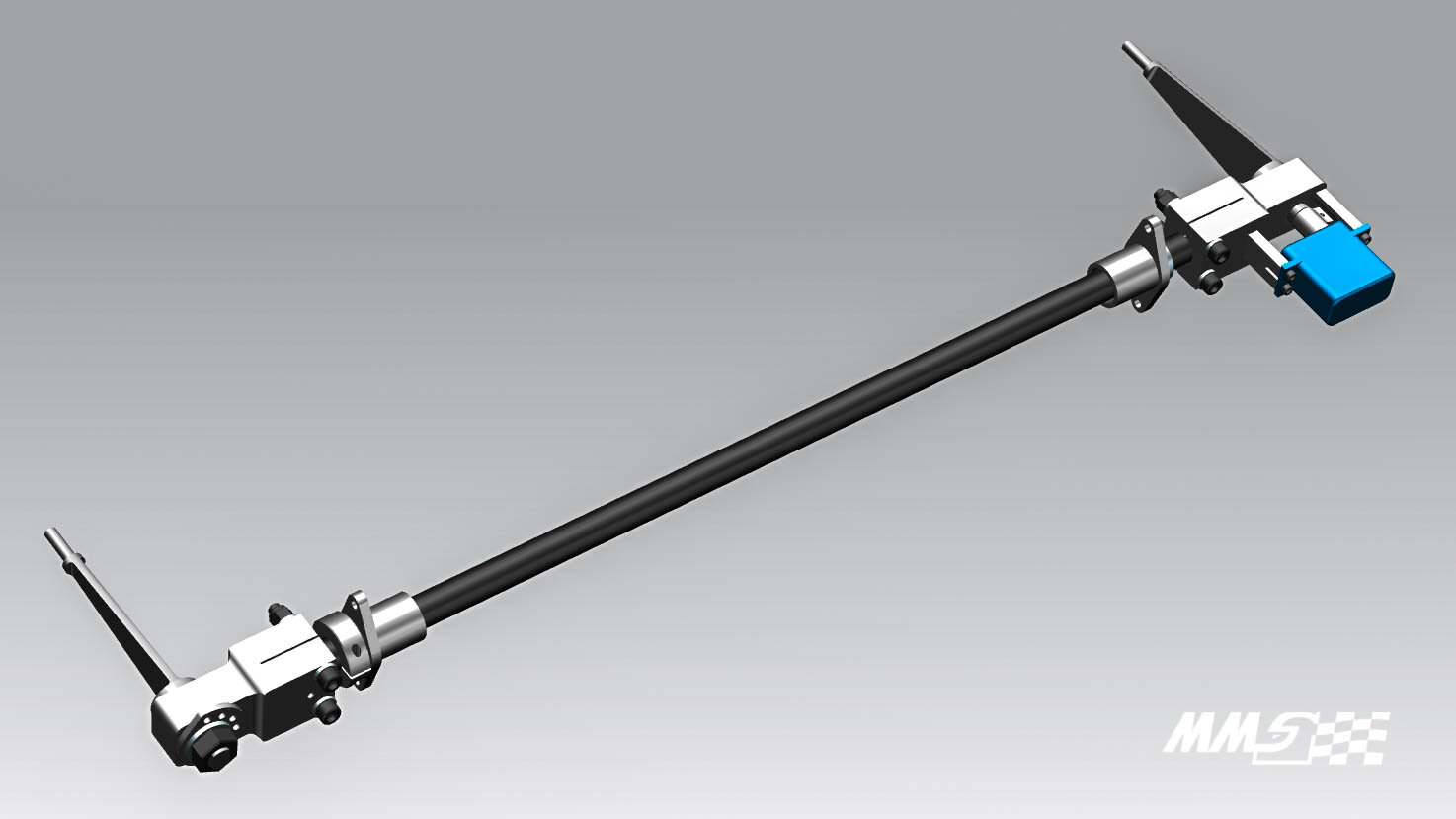Driver Adjustable Anti-Roll Bar
Preliminary Concept
Formula Student’s dynamic events seek to test every aspect of a car; whether that may be straight line speed in acceleration, cornering stability in skidpad, or all-round performance in autocross and endurance. In addition to the variety of events, vehicles also need to adapt to different drivers and constantly changing conditions; and a vehicle’s suspension possibly has the greatest impact on driver confidence. The ability to quickly and accurately tune a vehicle’s handling characteristics, throughout an endurance or during an autocross, allows drivers to more easily and predictably push the car to its full potential, ultimately maximising points at competition. With the objective of being able to implement these changes to suspension mid-race, Monash Motorsport had designed driver adjustable rear anti-roll bars for M19-C and M19-E.
An anti-roll bar aims to change the lateral load transfer distribution when cornering without impacting a vehicle’s pitch and heave characteristics by linking the suspension movement of opposite wheels. This adjustment in turn allows fine tuning that to optimize grip through cornering, thus improving cornering speed. However, the car's handling requirements throughout various corner types, tyre wear across an endurance event, fuel load and many other factors. An adjustable ARB allows the driver to specify the amount of weight transfer across the rear axle as well as offset any gradual changes throughout a longer stint. This gives the driver another tool to make the car as predictable as possible, and improves handling characteristics such as understeer and oversteer balance.
Chromoly steel was chosen for this iteration of the anti-roll bar system due to its high specific strength and stiffness, as well as manufacturability and availability. Choice of this material was thus significantly influenced by the team’s confidence in manufacturing and treatment processes, and the resulting performance and reliability. The ‘U-bar’ system implemented on the rear axle of M19-C and M19-E could be easily integrated with the direct acting suspension, and was remarkably simple and durable. Chromoly blades mounted on either side of the torsion bar transfer the linear travel of the lower wishbones to the opposite wheel. By rotating the blades, the vehicle’s roll stiffness can be adjusted as the change in moment of inertia impacts the deflection of the blade, thus increasing or decreasing the force transferred to the opposite wheel.
To tune the system and make adjustments, one blade is directly driven by a servomotor, whilst the other can be manually angled to set the range of adjustability. Torsion bar stiffness was carefully chosen to achieve 5% of adjustability from the vehicle’s roll balance. As spring stiffness also affects roll balance, considerations had to be made to avoid the need to compensate with softer springs, which would impact the vehicle’s behaviour in pitch and heave. FEA was used to develop and refine the blade profiles for specified load cases, and revealed the blade’s lack of linearity in stiffness as it was rotated. This was especially due to the trapezoidal shape of the fins. Motor choice was guided by considerations regarding motor torque, power draw, packaging, and component mass. Testing the shortlisted motors was especially critical as it was essential that the blade remained slop free whilst still adequately free spinning.
With the goal of ultimately competing in Europe, unknown track surfaces pose a significant risk to the vehicle’s performance as handling predictability, consistency, and rate of tyre degradation on these surfaces are the key to the full exploitation of the car’s potential. As discovered in previous years of European competition, incorrect anti-roll bar adjustments can be detrimental to lap times without the option to quickly rectify the situation. Additionally, the disadvantage of having minimal testing time on an unknown surface in Europe amplifies the importance of a driver adjustable anti-roll bar when it comes to being competitive on the world stage. As this component is continually refined, exploration into greater driver adjustability and more detailed metrics will give Monash Motorsport a competitive edge in competitions both domestically and internationally.

